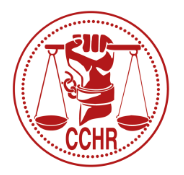
Many people don’t know about special education and the disproportionate number of black teenagers, especially African American boys who are placed in these classrooms.
What do we know about special education? It is a $60 billion industry. When it is
misused, black teenagers, especially boys, end up suffering. In urban areas,
only 61% of black teenagers (speaking mainly of boys) graduate from high
school. And when the focus is about special education, only 27% of these
children graduate high school.
Worse yet, when our knowledge about special education leads to its use as a pat
answer for troubled black teenagers, our educational system has failed. In
quite a few instances, Ritalin is seen as a complement to this quick fix. So
much so, that this drug has become number 5 of all popular drugs used in this
country. (After cigarettes, alcohol, cocaine and pot.)
Many of these children are suffering problems that could be prevented in many ways.
When younger, these children may have been in need of extra academic attention.
Some of them may have arrived at school with empty stomachs. And some may be
precocious and unable to sit still. Of course, the standard diagnosis for that
is ADD and ADHD.
A chilling statistic is that prisons project their future construction according
to the current reading levels of fourth grade students. It is offensive that
these numbers are being used to create future jobs for those in construction
and prison administration, rather than a wakeup call to help children.
What is the cost of prison incarceration versus the cost of properly educating a black
teenager, or any teenager? Yearly incarceration costs the taxpayer $28,000 a
year. The yearly cost of educating one child is estimated to be $1,000.
When talking about special education, diagnosis of ADD and ADHD are unavoidable. In
fact, 50% of all children in special education have had this label attached.
And Ritalin is one of the major treatments for this unproven “mental illness.”
Some of the side effects of this common prescription drug are:
- Addiction
- Dizziness
- Trouble sleeping
- Stomachache
- Headache
- Nausea
- Heart Palpitations
- Slowing growth in
children (both height and weight) - Seizures,
especially when there is a history of them - Changes in
eyesight, including blurred vision
And there are more serious, if less common side effects as well. These include:
- Depression
- Craving for Cocaine
- Infected skin
- Heart problems
- Suspicion and
paranoia - A tolerance of the
drug, which results in a raised dosage - Various infections
- Liver damage
Since there are alternative treatments for black teenagers, and anyone who has been
diagnosed as ADD or ADHD, one wonders why this dangerous drug is still being
prescribed. In speaking about special education or any type of education where
a child is being labeled, it is advisable to look for alternatives to
psychiatric drug treatment.
http://www.teachersofcolor.com/2009/04/black-boys-and-special-education-change-is-needed/
http://ritalinsideeffects.net/
https://cchrflorida.org


0 Comments